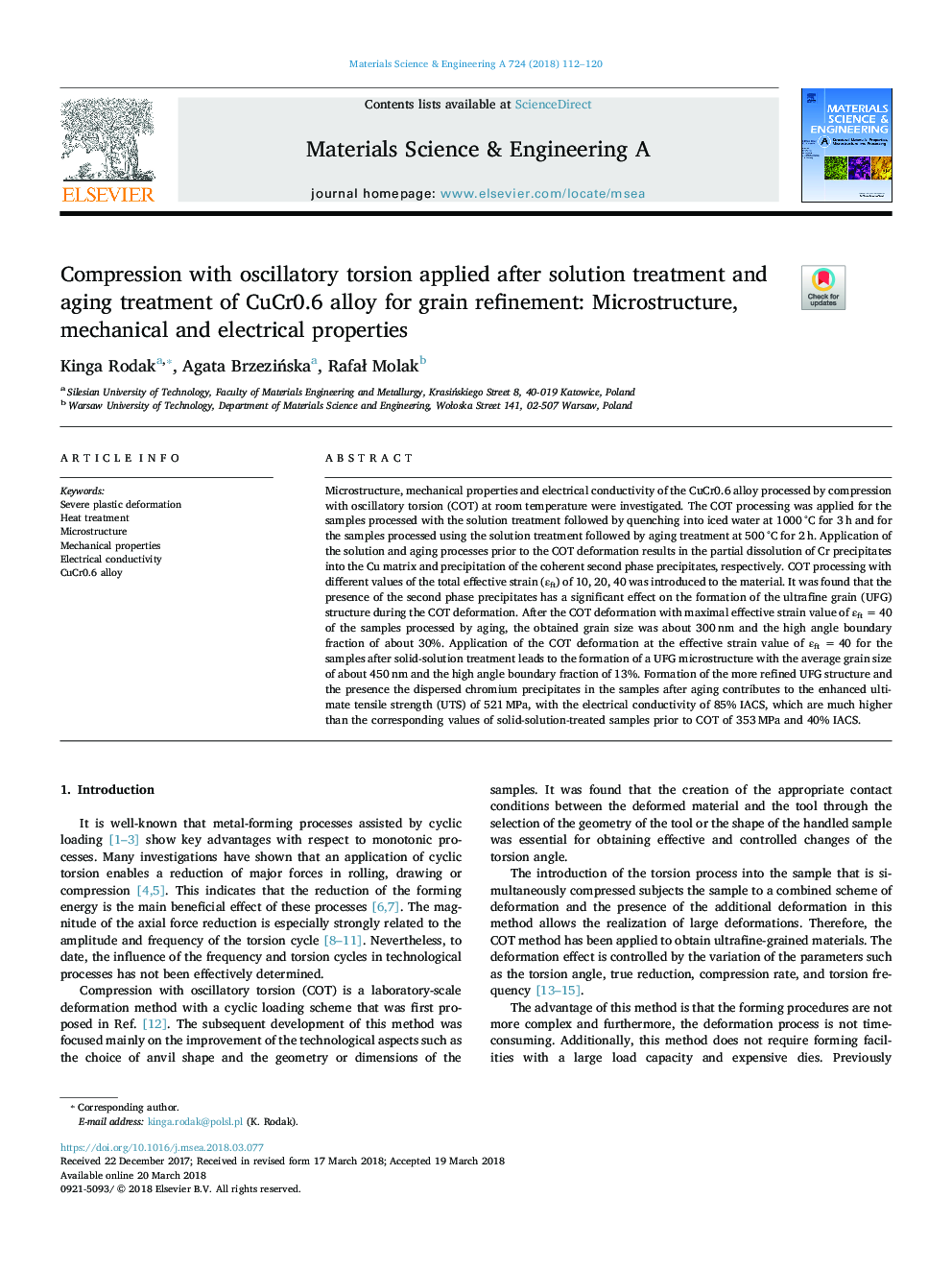| Article ID | Journal | Published Year | Pages | File Type |
|---|---|---|---|---|
| 7972437 | Materials Science and Engineering: A | 2018 | 9 Pages |
Abstract
Microstructure, mechanical properties and electrical conductivity of the CuCr0.6 alloy processed by compression with oscillatory torsion (COT) at room temperature were investigated. The COT processing was applied for the samples processed with the solution treatment followed by quenching into iced water at 1000â¯Â°C for 3â¯h and for the samples processed using the solution treatment followed by aging treatment at 500â¯Â°C for 2â¯h. Application of the solution and aging processes prior to the COT deformation results in the partial dissolution of Cr precipitates into the Cu matrix and precipitation of the coherent second phase precipitates, respectively. COT processing with different values of the total effective strain (εft) of 10, 20, 40 was introduced to the material. It was found that the presence of the second phase precipitates has a significant effect on the formation of the ultrafine grain (UFG) structure during the COT deformation. After the COT deformation with maximal effective strain value of εft =â¯40 of the samples processed by aging, the obtained grain size was about 300â¯nm and the high angle boundary fraction of about 30%. Application of the COT deformation at the effective strain value of εft =â¯40 for the samples after solid-solution treatment leads to the formation of a UFG microstructure with the average grain size of about 450â¯nm and the high angle boundary fraction of 13%. Formation of the more refined UFG structure and the presence the dispersed chromium precipitates in the samples after aging contributes to the enhanced ultimate tensile strength (UTS) of 521â¯MPa, with the electrical conductivity of 85% IACS, which are much higher than the corresponding values of solid-solution-treated samples prior to COT of 353â¯MPa and 40% IACS.
Keywords
Related Topics
Physical Sciences and Engineering
Materials Science
Materials Science (General)
Authors
Kinga Rodak, Agata BrzeziÅska, RafaÅ Molak,
